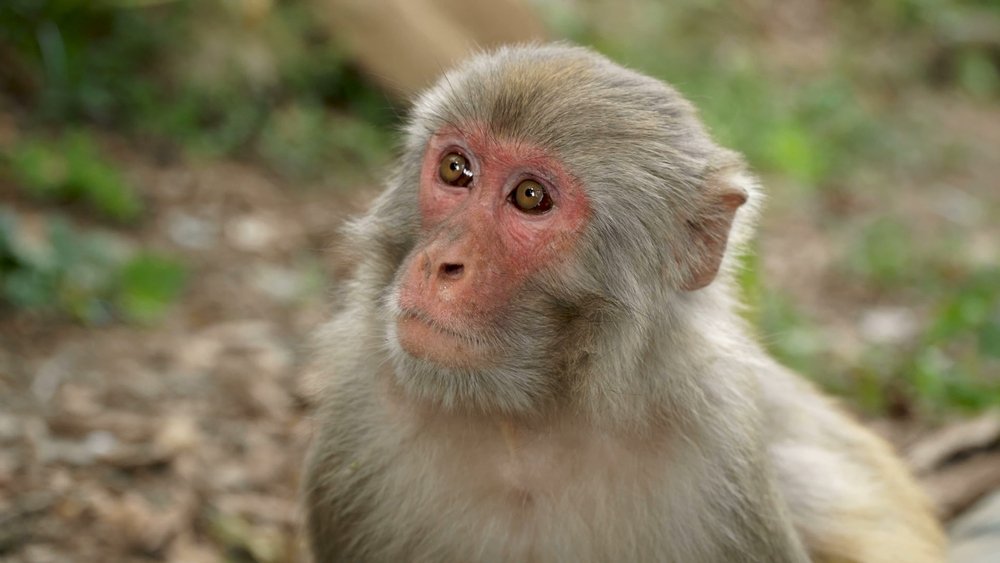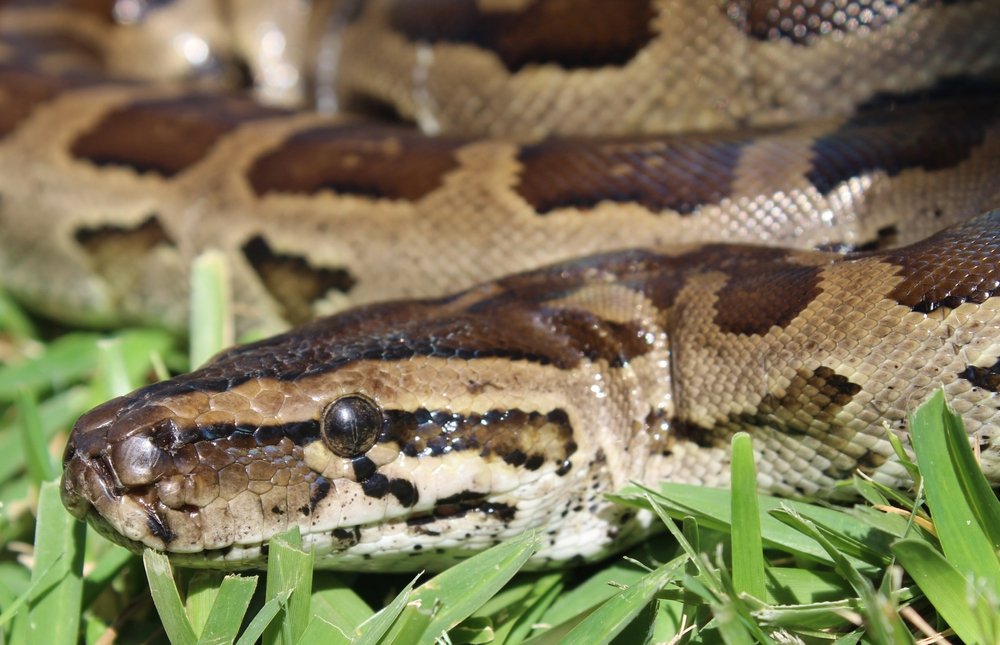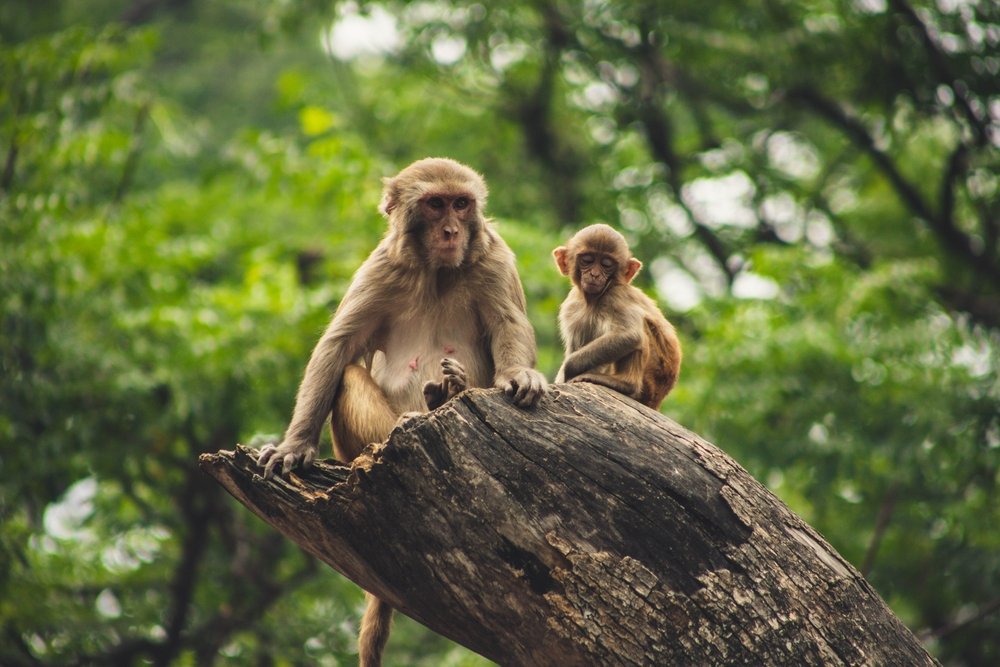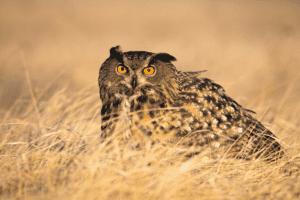Have you ever wondered what animals eat monkeys? Well you have come at the right place. In this article we will discuss the top ten predators of monkeys.
Monkeys are mammals belonging to Simiiformes, popularly known as simians. Traditionally, all organisms belonging to the simians group have been considered monkeys, with the exception of apes, a paraphyletic grouping; however, apes (Hominoidea) are also included in a broader sense, making the labels monkeys and simians are synonyms for each other.
Table of Contents
General behavior
Many monkey species are arboreal (live in trees), however, some, such as baboons, prefer to stay on the ground. The majority of simians are diurnal animals. After humans, simians are said to be the most intelligent creatures. Their intelligence is what allows them to survive in the face of so many threatening predators.
They are thought to be the ancestors of humans due to their great intelligence and likeness to humans. They have been observed providing excellent care to their children and the most interesting fact about them is that they naturally have some humanistic behavior.
That’s why, When we think of monkeys, we have a lot of different associations. Due to their unique quality of intelligence curiosity raises questions, like “what animals eat monkeys” or “what threatens monkeys?”

Predators of Monkeys
So, let’s get to the answer shortly, we can say the animals that can be monkey predators are mostly determined by the monkey’s size and habitat. Birds of prey eat small and immature monkeys. Larger monkeys are vulnerable to predators such as crocodiles, big cats, hyenas, and humans.
Primarily, big cats prey on monkeys who spend the majority of their time in trees, but they are vulnerable to water predators like snakes and alligators when they venture out of the canopy. But, “what are the predators of monkeys?” the actual list is quite surprising. Cannibalism among monkeys has also been reported in a few instances, which is quite shocking.
What Animals Eat Monkeys
The top ten predators of monkeys are listed below.
Birds of prey
Several little monkey species provide excellent prey for various sorts of birds of prey. These predators can easily take the small monkeys who reside in the treetops.
With their sharp claws, the predator birds can fly down quickly and grab the unaware monkeys away. They have excellent vision, which allows them to locate their prey even within the dense canopy of the forest.
Big Cats

Big cats such as tigers, lions, and leopards are known to inhibit in the same regions as monkeys. These cats are adept at moving about on both lands and in trees.
They are excellent hunters who are quick, agile, and nimble. They frequently prey on young monkeys who have strayed from their family. Even larger size monkeys are vulnerable to ferocious big cats.
Hyenas
Hyenas can also be a concern for monkeys in some regions. They aren’t as good hunters as big cats, but they frequently hunt in groups. Most of the time, this provides them the upper hand.
Crocodiles and Alligators
Some monkeys enjoy spending time in or near the water. They go swimming or cross rivers on occasion. Crocodiles and Alligators inhibiting in the same rivers or streams prey on them because of this behavior. These predators know how to blend in with their environment in the water. The monkeys are so oblivious of the perils that lay around.
Larger Snakes
Headland and Greene (2011) substantiate the theory that monkeys and snakes have had intricate reciprocal connections during 80 million years of shared evolutionary history by documenting snake predation on primates and vice versa in the core history of each group, including human hunter-gatherers.
Although no snakes specialize in primates, several do prey on them on a regular basis. Reticulated pythons, for example, consume lorises, tarsiers, and several monkey species, but boa constrictors eat tamarins, titis, marmosets, sakis, and capuchins. Prehistoric Amerindians and modern humans, on the other hand, have killed and eaten boas, pythons, and a variety of other non-poisonous and venomous snakes.
A tarsier that ate an Asian coral snake and capuchins who utilized branches to kill a big viper are examples of nonhuman primates dispatching deadly serpents. At the location of fatal encounters, lemurs, tarsiers, monkeys, and chimps try to scam the snakes with mobbing, social learning, collective defense, and uneasiness.

Humans
Monkey meat is a type of bush meat made from the flesh and other edible portions of monkeys. Monkey meat has been consumed by humans in several places around the world, including several Asian and African countries.
Consumption of monkey flesh has also been reported in portions of Europe, China, and the Americas. Monkeys are slaughtered in some cultures so that portions of their bodies can be utilized to take medication.
Other Monkeys
Some primate species, such as chimpanzees, have been observed feeding on smaller monkeys. Chimps eat the head first, especially the brain when eating infant monkeys. When feeding on elderly monkeys, they start with the organs that they find nourishing, such as the liver, kidneys, and heart.
Owls
Owls are a type of bird that can be found anywhere on the planet. Small monkeys are prey for these nocturnal birds of prey. Typically, owls will fly into trees where monkeys are sleeping and snare them with their keen talons.
Owls are also distinguished by their large eyes, which let them see in the dark. Animals such as rats, bats, and even other birds have been known to eat them. Owls prefer to dwell in forests or other densely forested places, however, they can also be found in cities.
Threats from humans other than eating
Humans are currently the greatest threat to the population and diversity of simians. Logging threatens their natural habitats on a regular basis. The deforestation, forest degradation, and replacement of natural vegetation with plants that provide a nutritious source of food for humans are causing a threat to various ecad of monkeys.
Monkey species come to human towns in quest of food in some regions. They’ve come seeking lambs, eggs, and fruits that humans store for their own consumption. Monkeys are creatures of habit, so they return time and time.
Many villages try to solve the situation by murdering the monkeys that have invaded their territory. Poaching is another issue for monkeys. Monkeys are employed as pets in the modern world for a variety of household services.

Interesting facts about Monkeys
- Monkeys are extremely noisy animals, and this is how they communicate with one another. To ward off danger, call a mate, and even communicate with their young, they use a variety of pitches. Even though monkey communication has been researched for a long time, there is still limited knowledge about it.
- Monkeys are found in 264 different species around the world. They’re often lumped in with apes, although they’re not the same. The fundamental distinction between apes and monkeys is that apes lack a tail, whereas monkeys do.
- Callaway (2010) reported that Chimpanzees are the most likely of all the great apes to engage in cannibalism. Males will typically kill and consume the child of another female, usually within their group but occasionally outside. In a fight, chimps do not consume the bodies of adults from other groups.
- Nonetheless, according to recent USDA data, scientists had used 75,825 nonhuman primates in their study during the past year accounting for up to 22%. Cats, dogs, rabbits, and other animals, on the other hand, are being employed in lesser numbers, according to USDA data.
- Monkeys have also been utilized in NASA’s space program. Albert II became the first monkey in space which was launched in a rocket on June 4, 1949 for experimentation. He reached 134 kilometers in the space away from the Earth, but his parachute failed and he perished on contact. Albert I, a prior monkey, died when the V-2 rocket failed to reach its maximum altitude.
What do monkey eats?
Monkeys are known for eating bananas, but their diet varies greatly depending on where they live and what foods are available to them. Saki monkeys, for example, can consume up to 50 different fruit species in a single day. Monkeys are omnivores; they feed upon both plant-based meals like fruits and nuts, as well as meaty things like eggs of birds and a Varity of small lizards.
The diets of monkeys can change as the seasons’ change. Probosci’s monkeys, for example, eat largely ripe fruit from January to May and more leaves from June to December. Some species have more specialized diets. Colobus monkeys are mostly leaf eaters with sophisticated stomachs that allow them to digest hazardous vegetation that other monkeys cannot.
Read Also: What Does Puma Eat And How Do They Hunt
How do monkeys protect themselves from predators?
Monkeys are incredibly sociable creatures, thus good communication is essential for them to be with their crowdie groups. They communicate by facial expressions, vocalizations, and body motions. In monkey society, for example, staring is a danger.
To avoid frightening other monkeys, monkeys look down or aside, preventing fighting. Long-tailed monkeys utilize their tails to communicate with others and to express their mood. “Stay out—this is my area,” loud acoustic behavior can convey. Instead of fighting, vocalizations are a much safer approach to communicating. Monkeys interact with each other through grunts, squeaks, barks, screams, hoots, groans, and wails.
We may mistake a smile for giggling to reveal the teeth but it is a threatening gesture. One of the ways monkeys fight and defend themselves is by biting, thus this is an indication of hostility or rage for them. Yawning, head bobbing, and jerking the head and shoulders forward are all signals of hostility. To emphasize their facial expressions, cotton-topped tamarins raise and drop a crest of fluffy white hair on their head.
Grooming is another way for monkeys to express social affiliation and make peace with one another. Grooming not only keeps monkeys’ fur free of dirt, dead skin, and parasites but also helps them form and maintain positive social ties. Grooming appears to be a means for troop members to make amends after a fight or to make new acquaintances. All of these behaviors help them stay aware of their surroundings and avoid being attacked.
References
https://www.pnas.org/content/108/52/E1470.short
https://www.sciencedirect.com/science/article/pii/S0163104781908268
https://www.jstor.org/stable/24939338





